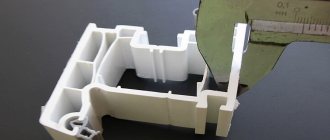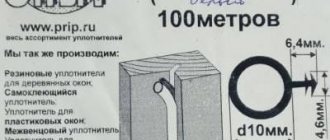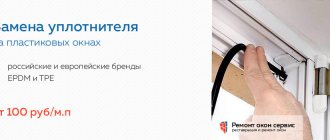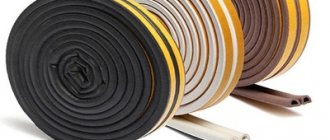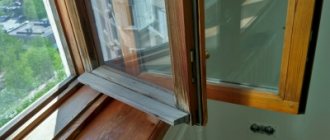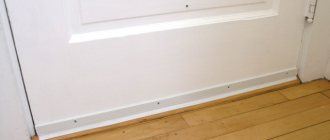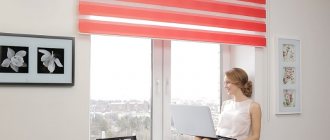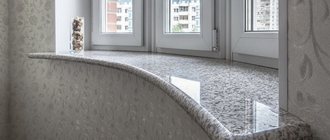German Semperit seal for windows made of non-porous rubber based on EPDM rubber (ethylene propylene diene rubber).
You can buy window rubber for insulating plastic windows by the meter wholesale and retail. We cut any quantity to order.
The price is indicated for 1 linear meter.
The professional recessed seal KBE (Proplex) 013-228D for plastic windows and doors is produced by the German company Semperit from non-porous rubber based on EPDM rubber (ethylene propylene diene rubber). It has significant advantages and service life, and with proper use, its performance properties are maintained for 15-20 years. The reinforced seal for plastic doors and windows has increased wall thickness, which extends its service life and improves sealing properties.
Why is KBE sealant needed in plastic windows and doors?
The KBE seal is one of the main components of plastic windows and runs along the entire perimeter of the window. To guarantee protection from the influence of the external environment, two sealing circuits are used. One contour is on the frame, the other on the window sash.
Our specialists replace KBE sealing gaskets on plastic windows. The price for installing and replacing the KBE (kbe) seal is quite affordable.
Our specialists replace KBE rubber seals on plastic windows. The price for replacing the KBE rubber seal is quite affordable.
Rubber-epdm sealant KBE (kbe) is produced by:
— Semperit Germany
— Artie (trademark Elementis) Russia, Tambov
— Union Polimer Tehnologies Russia, Moscow region, pos. Sofrino
— Donskoy Profile LLC, Rostov-on-Don
How to independently determine whether the KBE seal needs to be changed
You can determine whether the KBE seal needs replacement yourself. Open the window sash and clean the seal from dirt using a damp cloth. Carefully inspect the seal on the sash and frame. The outer contour usually has more damage. If the seal has become hard, irregularities (tears) have appeared, the color has faded (become uneven) - this plastic window seal must be replaced. Because the outer contour is more susceptible to wear, some window owners, in order to save money, prefer to replace only it, but, in this case, the pressure on the sash is weakened and no one can guarantee that the wind will stop blowing from the window.
OP-06-228 Rubber seal for plastic windows, analogue of the KBE-228 profile
Table of characteristics of seals made of various materials:
* PVC with frost-resistant additives
| Properties | PVC* | TPE | TPV | EPDM | Silicon |
| Permanent deformation | ++ | ++ | +++ | +++ | +++ |
| Shape recovery coefficient after compression at -20°C | 0,38 | 0,39 | 0,39 | 0,39 | 0,5 |
| Temperature limits oC | -25 / +80 | -50 / +90 | -60 / +100 | -50 / +100 | -70 / +280 |
| Elongation at break, % | 380 | 600 | 500 | 250 | 400 |
| Tensile strength, MPa | 11 | 13 | 11 | 9 | 13 |
| Service life, years | > 5 | > 10 | > 10 | > 10 | > 15 |
The seal in the groove of the rebate and frame of plastic windows and doors from the KBE profile, similar to the KBE-228 seal, is made of THERMOPLAST TU 5775-008-29377984-2004 made for the KBE-228 profile. The
seal for plastic windows and doors is made by extrusion from thermoplastic with imported additives for frost resistance, unlike rubber seals, thermoplastic has a more elastic structure and is not subject to destruction under sudden temperature changes and exposure to ultraviolet radiation (sun rays).
Seals for plastic windows made of thermoplastics are elastic, weather- and frost-resistant (down to -50 o C), easily restore their shape after compression, and have significant resistance to repeated deformations (more than 100 thousand kilocycles without destruction). Service life more than 10 years.
The KBE profile uses the most effective and versatile rebate seal KBE-228
.
It has a closed air chamber and fits KBE plastic windows and doors, a profile that has a small step (protrusion).
This seal
has fairly high elasticity and an internal air cavity
, which gives the seal low thermal conductivity and significantly improves the quality of the seal.
Available in four colors:
White; Grey; Brown; Black.
Packed:
Packed in a cardboard box of
200m.
Shipped:
by linear meters - retail in
boxes of 200m. — wholesale (see photo above)
Mode of application:
1. Open the window sash, remove the old seal around the perimeter of the window sash and frame by pulling it. In some frames, the seal is pressed against the window hinges; in these places, the seal will have to be cut with a sharp knife or scissors. 2. Insert a new TPE seal around the perimeter of the sash and window block, positioning it as shown in the figure (see diagram below). When inserting the seal onto it, you need to apply a little pressure so that it snaps into the groove of the window and does not come out of it. When bending the seal at the corners of the seal contour, it is advisable to make small cuts in it at an angle of 45 degrees (without cutting off the seal all the way). 3. After you have inserted the seal around the perimeter of the sash and frame, you need to cut it with sharp scissors so that the end of the seal remaining in the sash is slightly longer than necessary, since the seal is easily compressed and inserting it by squeezing it a little will not be difficult. This will avoid blowing in the joints between the ends of the seal. If the profile has two or more sealing contours, then it is better to place the joints on different sides of the window to prevent through blowing at the joints of the seal.
The installation diagram for the window seal is shown below:
Types of KBE seals (kbe)
| Marking | Type of seal KBE (kbe) |
| KBE 227 | |
| KBE 228 | |
| KBE 229 | |
| KBE 254 | |
| KBE 255 |
Sealant KBE (kbe) 228 for frames and sashes
EPDM seals from the well-known manufacturer KBE have proven themselves to be the best in operation. The original KBE seal is marked along its entire length, which indicates its authenticity. The KBE seal is thicker compared to rehau, but this does not mean at all that it will “hold” better. Based on the best intentions, you can install a KBE 228 seal, but the flap may not close!!! Excessive thickness of the seal will interfere. Therefore, based on the size of the groove, the master decides on the spot which seal needs to be installed instead of the worn one.
Sealant KBE (kbe) 227 for double-glazed windows
Used for a tighter fit of the glass unit to the plastic profile.
Application of sealant
Window seals are an essential element of any plastic window structure. The main purpose of the thrust seal is to ensure a tight fit of the sashes to the window frame, which serves as a guarantee of protecting the room from street noise and the penetration of damp and cold air. Thrust seals are elastic gaskets made of high elasticity ethylene propylene rubber (EPDM) or silicone rubber. Seals of various configurations are manufactured and attached along the perimeter of the window sashes to the frame.
The seal is installed in a plastic profile to ensure a tight fit around the perimeter between the frame and the sash. An improved version of the seal is more often used as a replacement during the repair and maintenance of windows or plastic doors. The KBE-228 seal is a modified and more advanced version of the KBE-227 seal.
Characteristics of rubber-rubber epdm seals KBE (kbe)
| Characteristics | rubber-rubber seal EPDM (EPDM) KBE (kbe) |
| view | |
| Material | ethylene propylene diene rubber |
| color | black |
| Temperature range | -50+100 C |
| Care (maintenance) | Twice a year |
| Service life from the manufacturer | 15 -20 years |
| Service life is real | 10-15 years |
| Average cost of replacing a seal on one sash window (about 8 linear meters required) | from 100 to 250 rubles per linear meter |
| Compliance with GOST 30778-2001 | corresponds |
| Advantages | durable, not afraid of changes and low temperatures, affordable replacement cost |
| Flaws | may stain the frame slightly |
Seal selection (KBE)
Forgive me, but what can you “practice” on your windows and you are ready to pay for it? In general, a guarantee is given for the types of work performed and the expected result of the work is predicted, isn’t that right?
No, it’s simpler - I reserve for the working person the right to make a mistake, as well as for myself - the right to demand that this mistake be eliminated. Just in anticipation of the expected result. What does “training for my money” have to do with it?
At the same time, I (it seems to me) have the right, if it’s already a bummer, to ask “knowledgeable people”: what’s the matter? And based on the results, closely monitor the method for correcting the error.
About “227” you are (absolutely!!) right, but your answer is a little... vague. Since I am not a very lazy person in life, I asked KVE itself for advice. The kind young lady explained everything to me very sensibly. Agree that the text below is radically different from your answer.
Over the past 10 years, no radical changes have occurred in the design of the sealing of the ledge of the KBE “Etalon” external sealing system (formerly the system was called “Standard”) with an installation width of 58 mm. The option with installation of seal art. no. in both circuits (in the frame and in the sash) is still used. 227, although now profiles with already co-extruded seals are more often used. The official suppliers of KBE seals are German and Simperit, although in reality you can find other options on sale, produced in Turkey, Russia, China, etc. — of course, we do not check “unofficial” versions for compliance with KBE requirements.
Seal art. 227 is designed for installation in a nominal end gap between the frame and the sash of 3.5 mm.
As far as I understand, your gap between the frame and the sash on the street side is larger than the similar gap on the indoor side. The reason for this could be, for example, a deviation from the standard technology for welding profiles in corners (welding without special supports - “tsulag”), which could well have taken place 10 years ago. If the gaps are really different, it makes sense to try installing different seals in them. In general, I can recommend following these steps:
1. Work out the entire procedure for replacing the seal first on only one (preferably small) sash.
2. Replace the internal (room side) sealing circuit with a new seal art. 227.
3. If the internal contour is too tight (the gap between the frame and the sash is noticeably less than 3.5 mm), then try to reduce the pressure of the sash to the frame by adjusting the fittings. Almost any fitting has the ability to adjust the pressure at all locking points and hinges within +/-0.8...1 mm. The exception now usually consists of lower loops, but the fashion for their simplified version has spread only in the last 5 years.
4. If it was possible to achieve correct functioning of the internal sealing circuit, replace the outer (street side) circuit with a new seal art. 227.
5. If the outer contour does not seal (the gap between the frame and the sash is much larger than 3.5 mm), try replacing the outer seal with art. DP7. This is a universal seal that can be used both in the rebate and when sealing a double-glazed window. It is an analogue of a co-extruded external seal and is more “full” than art. 227.
How to choose a seal for plastic windows?
Seals from different window manufacturers can vary greatly in material, shape, thickness, and elasticity. Therefore, it is better to entrust the diagnosis of the condition of the seal, its selection and replacement to an experienced, qualified technician.
You won’t be able to buy a sealing gasket for plastic windows in a regular construction market. Companies that professionally repair windows buy it in bulk, in rolls of 400-500 meters. Each profile manufacturer has its own seal, because The size of the groove for the seal is different for each manufacturer.
Be careful when choosing a seal for your windows, since in this market, as elsewhere, there are original KBE rubber seals and analogues. Analogs are made similar in shape, but the dimensions do not always match. The composition and quality of such seals leave much to be desired. The seal for plastic windows and doors must comply with GOST 30778-2001.
Advantages of German Semperit seals
Semperit seals for plastic windows and doors have a long service life (confirmed by relevant studies by the isp Rosenheim Institute and the engineering office of Professor Joseph Schmidt), certified to DIN EN 12365, DIN 7863 and Russian GOST standards and have proven themselves in extreme weather conditions.
EPDM seals from Semperit have the following advantages:
- high resistance to weathering, UV rays, wear and mechanical damage;
- high elasticity in the temperature range from -40 to +100°C (elasticity remains for a long time, after repeated opening/closing of the valves);
- long service life (up to 15 years);
- easy installation/disassembly;
- high wear resistance.
GOST 30778-2001 for seals for windows and doors
GOST 30778-2001 defines the scope of application, introduces the classification and designation of seals. Determines technical requirements for the shape and composition of seals. Establishes acceptance rules and methods of control of finished products. Provides instructions for the operation, transportation and storage of seals.
Here are the most interesting excerpts for us:
3 Classification and designations
3.1 Designations of polymer materials used for the manufacture of seals
TPE - thermoplastic elastomer;
EPDM - ethylene propylene diene rubber (terpolymer of ethylene, propylene and diene with the remaining unsaturated part of the diene in the side chain);
ERM - ethylene-propylene rubber (ethylene-propylene copolymer);
VMQ - silicone rubbers containing methyl and vinyl substituted groups;
CR - chloroprene rubber.
3.4 Seals are divided depending on the types of window, door blocks and other structures for sealing the elements of which they are used:
D - for wooden window and door blocks;
P - for polyvinyl chloride window and door blocks;
A - for window and door blocks made of aluminum alloys;
C - for special (other) designs.
8 Operating instructions
8.2 The surfaces of window and door units in contact with the seals must be clean and free of scratches, sharp edges, nicks, scratches and other mechanical damage.
8.3 Installation of seals must be carried out without distortions, twisting and mechanical damage, without jerking or impact.
8.4 To facilitate installation and reduce friction, seals can be treated with a thin layer of silicone grease.
8.5 The seals are installed in the seat without stretching.
Seals for windows and doors
Seals for windows - gaskets made of rubber based on thermoplastic elastomers and rubbers with properties, shape and cross-sectional dimensions standardized by GOST 30778-2001 to ensure tightness or tightness of connections (and junctions) of elements and components in window or door units.
Each window or door seal has its own purpose, shape and dimensions, adapted to the unified seating rebate of the profile (or frame beam), and therefore is selected according to the type and material of the window structure or for paired or separate frames of combined blocks in accordance with GOST 25097-2002. The material of the sealing gasket (seal) for windows generally determines the temperature range of operation, the rate of thermal light-ozone aging in a deformed state, and the method of installing the seal. The most popular window and door seals are made from thermoplastic elastomers (TPE), “welded” to the profile during the extrusion process, ethylene propylene diene thermopolymers (EPDM), which are glued into the profile folds, silicone or chloroprene rubbers (VMQ and CR, respectively) “dry” installation with filling joints with adhesive sealants.
With the exception of TPE sealing gaskets, all rubber seals for windows are made in one of 3 hardness subgroups - from 45 - 55 to more than 75 Shore units (subgroups “a” and “b”, respectively). The higher the hardness of the material, the better the window seal resists wear, diffusion of dispersed dust, and moisture saturation, but also the greater the load on the hinge group (when sealing the rebate) or the glass unit (when sealing the junction in the profile rebate).
Thermoplastic elastomers and rubbers from which window seals are made have different compositions and have different temperature ranges of operation, determined by the lower limit by the temperature limit of brittleness, and by the upper limit by residual phenomena of change in shape under compressed conditions at elevated temperatures.
Thus, the threshold temperature for brittle destruction of the seal for TPE windows and those made of chloroprene rubber is minus 45 degrees, the seal for windows made of ethylene propylene rubber can withstand temperatures up to minus 50 degrees, and the seal for windows made of VMQ silicone rubber is minus 60 degrees Celsius. To increase resistance to deformation at elevated temperatures, window seals can be placed in the series TPE (thermoplastic elastomers), ethylene-propylene diene rubbers EPDM or EPM, silicone rubbers CR, chloroprene rubbers VMQ. Those. for southern regions with high intensity of solar insolation, the best seal for windows is made of chloroprene or silicone rubber; for northern regions, it is worth buying a seal for windows made of silicone or ethylene-propylene rubber; for the middle zone of the country, seals made of thermoplastic elastomers, CR, EPDM or EPM are completely suitable.
A seal for windows at the junction of a double-glazed window with a profile rebate or a sash rebate with a window frame, doors typically form two (or more) sealing contours of the connection, and the need to replace sealing gaskets is determined not by their appearance, but only by violations of the tightness, which may be caused by wear , incorrect choice of material for operating conditions, unprofessional assembly, installation, adjustment of the window or door unit.
The critical state of the junction unit is determined by the presence of a flow of natural air exchange at the place of the loose connection (“draft”), which can be identified by sensations with the back of the hand or vibrations of a thin sheet of paper held by one edge. A non-end-to-end leak can be suspected by the formation of condensation on a double-glazed window or the profile of a window or door in the cold season, but in the form of a strip of small width, and not along the entire plane of the glass, which is typical for problematic or unsuitable double-glazed windows.
Important:
The threshold temperature for condensation formation (dew point) forms on the surface of the window unit in “narrow” places, but depending on the temperature and relative humidity in the room.
Table. Threshold temperatures for condensation formation at different temperatures and relative humidity in the room.
Therefore, if the room is cool in winter (17-18 degrees) with normal humidity, or a humidifier is used at a temperature in the bedroom of 26 degrees, then the appearance of condensation on the windows is quite expected and the seal should not be blamed for this.
Before buying and changing a window seal due to a problem with condensation, you should try to fix the problem by adjusting the rebate, and also check the perimeter of the block’s connection to the wall opening, which can become a thermal bridge if not professionally installed. Incorrect installation of the window sill, when it completely blocks the heating radiator and does not allow flows of rising warm air to the surface of the window block, can lead to a decrease in the surface temperature of windows at the joints and abutments to critical values.
How to install or replace the KBE seal yourself
Is it possible to install or replace the KBE window seal yourself? Why not. It is not the Gods who burn the pots... As a result of the work, try not to break the hinges and fittings. Everything is simple only in videos on YouTube. And when it comes down to it, a lot of nuances arise that no one will ever talk about anywhere. Our advice is to trust your windows only to experienced craftsmen who every day encounter and successfully solve certain difficulties that arise when replacing seals in plastic windows!
The KBE (kbe) seal in the window is needed to prevent moisture from getting inside the profiles and fittings, and to prevent corrosion, for noise and heat insulation, and to avoid dust.
Any rubber product, even with proper care, loses its original performance characteristics over time. The same thing happens with the KBE rubber seal for windows. Over time, the KBE window seal seems to “flatten”, and cracks and tears appear on it. This means that it ceases to perform its function. The window becomes cold and drafts appear. To restore heat, sound insulation, replacing the KBE (kbe) window seal (replacing KBE (kbe) rubber bands on the windows) becomes simply necessary.
Some craftsmen are trying to solve the problem of “window insulation” on their own. They go to the store and buy self-adhesive insulation. They attach it all over the window and think that the drafts have been defeated!!! However, they do not think at all that this increases the load on the hinges and all fittings, which can lead to serious damage. You absolutely cannot do this!!!
Common mistakes when replacing a seal
The most common mistake made by the owner is replacing tires independently and incorrectly.
Many people think that once the window starts to blow out, the seal needs to be changed, and preferably a thicker one. If you think about it logically, this may seem true. Most owners of such a plastic window do just that, doing all the work themselves. But that's not true! As a result, the window closes even harder, and then the hardware breaks down.
People, as a rule, buy “KBE sealant” at the nearest hardware store and glue it along the contour of the window sash.
However, the blowing after such a “repair” will not decrease. Perhaps the problem is something else, for example with the deflection of the sash, subsidence of the fittings, violation of the geometry, etc., a complete adjustment of the window is needed. This only increases the load on the entire hinge group of the window and fittings.
Installation and replacement of KBE (kbe) seal on windows
In the production of metal-plastic windows, two types of sealing gaskets are used. Sash (sash) seal KBE (kbe) is used on frames and sashes. It protects the profile and fittings from moisture and dust, and the room from all unwanted factors. Another type of seal KBE (kbe) is used for a tighter fit of the glass unit to the frame.
The KBE seal is most susceptible to adverse environmental influences. Replacing the KBE seal on the windows will allow you to return warmth and comfort to your home.
You can extend the service life of the KBE sealing gasket for plastic windows through regular maintenance. It is recommended to clean the KBE (kbe) seal in plastic windows once every six months from dirt, wash it with soapy water and lubricate it with silicone grease.
Replacement and installation of KBE (kbe) seals in windows occurs on site. In its process, the old seal is removed, the grooves on the sash and frame are cleaned, into which a new KBE seal is then installed. When replacing the KBE seal using the pulling method, the window gasket should fit freely into the groove without force or tension.
There are two ways to change the KBE seal on windows:
- with the removal of the window sash
- without removing the window sash
Based on his experience and the specific situation, the master decides on the spot whether it is necessary to remove the sash to replace the KBE seal. An experienced plastic window repair technician can efficiently replace the KBE seal without removing the window sash.
Photo report of repair work:
Call a surveyor
When developing this window system, German engineers made sure that seals from competing manufacturers were not suitable for their windows.
Of course, there are exceptions, as a rule, only among Russian clones of German profile systems. For example, you can replace the KBE seal with the brand “Novotex”, “Proplex”, “VITRAGE” and the like. But you shouldn’t make such decisions on your own! One single wrong move and you will have to carry out a complete repair of the entire window, which will cost much more.
Free consultation:
Consultant:
Telegram:
WhatsApp:
E-mail: E-mail address is protected from spambots. Javascript must be enabled in your browser to view the address.
Attention! If a contract is not concluded at the site, a specialist visit will cost 800 rubles
in Moscow.
The minimum order price is 2500 rubles
. For example, when ordering the adjustment of 4 sashes at a cost of 2000 rubles, you will need to additionally order services in the amount of at least 500 rubles. Upon signing a contract, the visit is free.
Services
- Replacing a double-glazed window Replacing a single-chamber double-glazed window with a double-glazed window
- Double-glazed window formula
- In Khimki
- To Odintsovo
- In Mytishchi
- In Krasnogorsk
- In Istra
- In Balashikha
- In Lyubertsy
- Veka window adjustment
- BRUSBOX windows
- Veka window seal
Company
- Master's Company
- Discount for review
Plastic windows
- Repair of plastic windows Adjustment
- Replacing the seal
- Defogging
- Elimination of blowing
- Repair of PVC doors
- Insulation
- Installation of sashes
- Replacing broken glass
- Sealing and sound insulation
- Fittings service
- Removing the handle
Aluminum windows
- Repair of aluminum windows Renewal of seal
- Window adjustment
- Insulation
- Change the glass unit
- Aluminum doors
- Winter garden renovation
- Giesse
- GEZE
- SAVIO
- Schuco
Wooden windows
- Repair of wooden windows Replacement of seals
- Painting and restoration
- Insulation
- Replacement of glass unit
- Adjustment
Accessories
- Blinds
- Mosquito net
- Slopes for windows
- Double-glazed window with hole
- Electric drive for windows
- Transom devices
- Window tinting
- Balcony furniture
Geography of work
- Beyond the Moscow Ring Road Balashikha
- Zelenograd
- Khimki
- Krasnogorsk
- Odintsovo
- Mytishchi
- Lyubertsy
- Pavshino
- Aprelevka
- Vidnoe
- Vnukovo
- Kotelniki
- Zhulebino
- Novokosino
- Reutov
- Dolgoprudny
- Korolev
- Kommunarka
- Shcherbinka
- Podolsk
- Pushkino
- Domodedovo
- Dzerzhinsky
- Ramenskoye
- Istra
- Zvenigorod
- Ivanteevka
- Gangway
- Naro-Fominsk
- Storytelling
- Salaryevo
- Rumyantsevo
- Nakhabino
- Strogino
- Volokolamsk
- Novoperedelkino
- Moscow City
- Chertanovo
- River Station
- Mitino
- Yasenevo
- Maryino
- Otradnoe
- Perovo
- Solntsevo
- Sports
Hardware brands
- MACO
- Roto
- Internik
- FUHR
- Winkhaus
- Vorne
- Fornax
- Kale
- Saturn plus
- Siegenia
- VHS
- ROMB system
- Schuring
- Dr. Hahn
- Schüco
Window brands
- Trocal
- KBE
- Brusbox
- Schuco
- Veka
- Rehau
- Salamander
- Montblanc
Balcony repair
- Turnkey balcony repair Glazing of balconies
- Soundproofing the balcony
- Door handle repair
- Replacing glass in a door
- Balcony furniture
Mosquito net
- Mosquito nets Anti-cat
- Anti-dust
- Antipollen
- Ultraview
- Antibird
- Antimoshka
- Door
- Roll
- Pleated
- Sliding
- Framework
- Plug-in
- Non-standard
- For the dacha
- Measurement and installation
- To the balcony
- Mosquitoes wholesale
- Where to buy mosquito repellent
- Repair of mosquitoes
- From mosquitoes
- For wooden windows
- Fasteners
- Balashikha
- Mytishchi
- Khimki
- Dolgoprudny
- Odintsovo
- Aprelevka
- Lyubertsy
- Vidnoe
- Krasnogorsk
- Reutov
- Zhulebino
- Istra
- Kommunarka
- Zvenigorod
- Korolev
- Nakhabino
- Podolsk
- Domodedovo
- Zelenograd
Useful tips and recommendations for caring for windows and KBE seals
— if the slightest malfunction occurs in the operation of a plastic window, it is recommended to call a window repair specialist. It is strictly forbidden to use excessive physical force to open (close) a plastic window!
— after repair and restoration work, it is recommended to carry out servicing of the plastic window twice a year (cleaning off dirt and lubricating fittings and seals).
Based on our many years of experience, we recommend to our clients:
- Roto fittings. Due to its quality, Roto fittings have long been well established in the window market. Fine-tuning the window pressure ensures there is no backlash and increases the service life of all mechanisms.
— seals for windows with the highest performance characteristics: REHAU 952 and KBE 228. They comply with GOST 30778-2001 and will last more than 15 years.
An example of an incorrectly selected window seal
The plastic window whistles. What to do?
Let's give a specific example of how the window seal was chosen incorrectly. The owner of an apartment located on Vasilievsky Island (new building, frequent strong winds due to the proximity of the Gulf of Finland) contacted us. The main complaint was that the windows whistle in high winds. Typically, windows whistle when the seal is poorly worn and due to broken internal joint sealing seams.
The owner of the apartment said that some “master” replaced the seal a little over a year ago. Our technician arrived and saw the new seal that was installed there. A little research, and now we see the label from the box of this seal. Please note, this is a groove seal for wooden windows!!! However, the “master” installed it in a plastic window!!! After standing for some time (about a year), this seal became unusable and the windows whistled. Of course, this seal was replaced with the classic rubber-rubber KBE 228, which will last for more than 15 years. Also, our master restored the internal joining seam. The windows stopped whistling, the apartment became warm and quiet.
We repeat once again: Be careful when choosing a seal for your windows! Don't believe the stories about "miracle seals"! There is nothing better than time-tested rubber seals from rehau, kbe and veka.
Replacing the seal of plastic KBE windows
KBE plastic windows were pioneers of the Russian window market. In the mid-90s, it was KVE that occupied the main share of the Russian window market and only then “REHAU” and “VEKA” increased their sales, but still “KVE” is slightly ahead of the world leader in plastic windows “VEKA” in sales in Russia.
The PVC profile "KVE" is very technologically advanced and is loved by window manufacturers and installers. Connectors and extensions of PVC windows are easily joined. The profile, unlike Rehau, is not afraid of impacts and does not crack.
Most KBE plastic windows have a seal made of ethylene-propylene rubber; in catalogs it is usually called EPDM. Most KBE windows have just such a seal installed, article number KBE 227 (as in the figure). The official suppliers of KBE seals are German and Simperit, although in reality, in the production of windows, many use cheaper analogues made in Turkey, Russia, and China. “Unofficial” versions of seals are not tested for compliance with KBE requirements.
With the advent of new profiles of 70 mm width and higher in KBE, KBE switched to a chamber seal, catalog item KBE 228, made of ethylene-propylene rubber; it is preferable to its predecessor KBE 227 when replacing the seal on old KBE windows.
But quite often there are windows in new buildings with cheap “tender” PVC windows “KVE” in which a co-extruded seal made of modified PVC (thermoplastic elastomer) was installed. TPE seal. Unlike EPDM, the TPE seal becomes hard when the temperature drops below minus 20 degrees, causing it to start blowing from the windows. And if KBE windows with the old KBE 227 seal served for 10-15 years without problems, then with the version of the co-extruded TPE seal, replacement of the seals of KBE plastic windows is required.
What sealing options are preferable for KBE windows that have served for 10 years? If you have KBE windows of good quality, on which the manufacturer did not skimp on the reinforcing profile and fittings, then KBE 228 will suit you without any problems. Just ask the craftsmen. So that the original German seal is used. On the seal spool, you will find the brand and production date.
For problematic windows, where there are errors in the sash dimensions to a smaller extent, or this is an economical version of windows with thin reinforcement and an insufficient number of locking elements of window fittings, a repair silicone sealant “Eurostrip” is usually offered for installation. It has a hollow round shape of 8-10 mm. Since the Eurostrip seal is designed for repairing old wooden windows, it falls out of the groove of the KBE profile and is glued point-by-point into the groove with instant glue. Accordingly, since it is made of silicone, it will last much less time than the old rubber bands of KBE windows. It should be noted. That “Eurostrip” has only a white color and somehow does not look good on laminated windows after replacement, since it has a larger width than the original KBE 227 seal and protrudes beyond the dimensions of the sash by 3-4 mm.
Most “advanced” repairmen use polyurethane foam sealant Q-lon 9646 from the German company Schlegel. This seal has no analogues or counterfeits on the market, even in China, since the equipment for its production is very expensive. On the seal Q-lon 9646 is white, on the side that is inserted inside the groove of the PVC profile, you can read the inscription KBE. Since this sealing article was developed specifically for the KBE profile system, although it is used as a universal seal for the repair of PVC windows and other brands.
Replacing the seal of KBE plastic windows is carried out only using polyurethane foam sealant Q-lon 9646. The cost of replacing the PVC seal of KBE windows is from 130 to 250 rubles, depending on the volume. We have black and white sealants available. If you want to replace the PVC seal of KBE windows with your own hands, then we sell Q-lon 9646 seal in coils of 250 m. The cost of a coil of Schlegel q-lon 9646 seal is 250 linear meters. -9500 rubles, that’s less than 40 rubles per linear meter. color white and black. The cost of delivery of the seal in Moscow is 1000 rubles. Pickup in Zarechye village Skolkovskoe highway. MKAD or Istra district of Ognikovo village.
Comments: 03/23/2016 15:08 Svetlana Yushkina
I had a very unpleasant story with the Kalev windows. In my apartment, I installed very beautiful “Kaleva Deco” windows. When the renovation of the apartment was completed, I called the cleaners by advertisement to clean everything, including the windows. They really cleaned up well, but only two weeks later I noticed that the white silicone seal had cracked and began to fall out in pieces. According to the complaint at Kalev, they said that the window washers were to blame for everything and that the silicone seal had become unusable due to their products. The guys who washed the windows said that they washed them with Mr. Muscle ammonia and did not use any solvents. Now I’m afraid to contact Kalev” and install a silicone seal. especially since I have to pay for it. Do you guarantee, if I order a replacement seal from you, that the Q-lon seal will not fall apart after washing the windows with a good glass cleaner?
03/23/2016 22:26palikprof We have been using Schlegel Q-lon sealant for window repairs since 2004. There were no complaints about its damage. Our material warranty is 3 years. There is a white seal, just for the beautiful Kaleva windows!
03/26/2016 19:12Oleg 72 Svetlana, you can install a gray rubber seal, it is resistant to detergents and much cheaper than “Q-lon”
03/29/2016 19:51 Svetlana Yushkina Master Igor came today and changed my poor seal. The “Schlegel” seal is white and looks very good on my white “Kaleva” windows. I conducted an experiment on the strength of chemicals on the Schlegel seal. I cleaned it with nail polish remover and vinegar! Thanks to Igor for the advice on window care. It’s good that I ordered a replacement seal in March, 100 rubles per meter, which is two times lower than what other companies offered :))
04/03/2016 09:31 Sergey It’s not true, we have been installing “Eurostrip” to our customers for 6 years and no one has complained about the blowing, I installed Eurostrip in the KVE windows at home 5 years ago, the fact that it sticks out a little beyond the edge of the sash makes me It doesn’t bother you; if there’s no breeze coming from the windows, you don’t even pay attention to them.
04/03/2016 17:58 Vladimir The seals need to be replaced. 4 sashes 157*49cm, 4 sashes 160*51.2cm, 2 sashes 160*71cm. As far as I understand, it is better to use either a 100% analogue of the seal that is currently installed, or a universal one from EuroStrip. What do you recommend? Please clarify how much the work will cost including travel, materials, etc.? When can you come? Apartment on Frunzenskaya. Best wishes, Vladimir.
01/02/2017 20:20 Sergey Question about blowing windows from the hinge side. I have a gap in the middle of the window, the seal does not touch the frame and the street is actually visible. It blows and there is a lot of audibility, which seal should be placed wider to cover the gap, maybe Eurostrip is better.
01/03/2017 07:51 palikprof Most likely you should not change the seal at all. It is necessary to wedge the sash so that it becomes wider. When installing the window, the installers stretched the frame and now, in order for the sash seal to overlap the frame, it is necessary to remove the glazing bead and place several straightening plates between the double-glazed window and the sash profile; sometimes it is necessary to stretch the sash up to 1 cm.
Frequently asked questions about the KBE seal (kbe)
We have collected here the most popular questions about the KBE sealant; we recommend that you read the answers.
Question No. 1
Sealant KBE (kbe) for windows
Is it possible to replace the KBE seal in windows?
Answer:
Yes, it is possible to replace the KBE seal in windows. Call +7 (812) 904-30-42 and call a specialist to replace KBE (kbe) seals in windows in St. Petersburg (St. Petersburg) and the Leningrad Region inexpensively and with high quality.
Question No. 2
How much does it cost to replace a KBE seal in windows in St. Petersburg (St. Petersburg) and the Leningrad Region?
Maybe it’s easier and cheaper to install a new window than to replace the KBE seal in the windows?
Answer:
The cost of replacing the KBE (kbe) seal in windows starts from 100 rubles per linear meter. Installing a new window is no easier or cheaper than replacing the KBE seal in the windows.
Question #3
What materials and tools do you use to replace the KBE seal in windows in St. Petersburg (St. Petersburg) and the Leningrad Region?
Do you have the materials and tools to replace the KBE seal on my window?
Answer:
In order to replace the KBE seal in windows, we use only original materials and professional tools. Yes, we have the materials and tools for your window and we can replace the KBE seal in the window.
Question #4
Do you provide a guarantee for replacing the KBE (kbe) seal in a window in St. Petersburg (St. Petersburg)?
What is your guarantee for work on replacing KBE seals in windows?
Answer:
Yes, we guarantee our work. Work to replace the KBE seal in windows is guaranteed for one year.
Question #5
Why did it start blowing even more from the windows after replacing the KBE seal?
After replacing the KBE seal, it started blowing even more from the windows, why?
Answer:
Possible answer options: - crooked hands of the master - the “new” seal was incorrectly selected - the “new” seal was installed incorrectly - the fittings of a plastic window or door were not adjusted - a crooked (low-quality) profile - the seal was incorrectly selected for such a profile - there are not enough clamping locks , lock strikers It is worth entrusting this work to professionals so that
the installation or replacement of KBE (kbe) seals in windows is done with high quality and without any “surprises”.
Honest reviews from our clients
So, fulfilling my earlier promise to you, I am again raising the topic about the specifics of replacing seals “soldered” into a plastic profile.
This time, we will talk about the mega-widespread KBE windows, which are glazed in almost every third new building in Moscow. Let me remind you that co-extruded “rubber” is also plastic (thermoelastopolymer, unlike traditional rubber), it is welded and processed together with the window profile.
Technologically, the production of plastic windows becomes much easier, and most importantly, cheaper . It is not surprising that “soldered” seals are gradually occupying an increasing share in the mass production of windows (despite the fact that in terms of operational parameters they are in many ways inferior to traditional ones).
The original KBE profile has had co-extruded rubber in its line for a very long time, and of relatively good quality.
Why does it have to be changed so often, on completely new windows?
The fact is that most modern windows do not comply with SNiP for air exchange in residential premises. They do not allow the amount of air required by the rules to pass through when closed , and building full-fledged ventilation systems in apartments is very expensive. What can I say, developers usually cannot afford even high-quality adjustable ventilation valves!
Therefore, in order to rent out a house, bypassing SNiP practically for free, the windows are simply made with holes. They cut out part of the seal on the frame and sash, and at the “outlet” of the air they put an extremely cheap kind of ventilation valve. This is what it looks like on the windows of KBE, one of the Moscow developers:
The result of using windows “modified” in this way is predictably sad - uncontrolled drafts in winter, constant dirt and dust on the slopes around the “valve” . No self-respecting window company spoils windows in this way - these modifications are found only in new buildings. But on what scale!
That’s why we have to regularly change the co-extruded rubber bands and throw out the poor plastic ones, bringing the good KBE windows damaged by the developer back to a “human” form.
Now for the process. Unlike soldered VEKA rubber, this one does not need to be cut with a knife. We pry it up with a suitable “tool”, like an awl, and tear it out of the groove. This requires some effort; it holds especially tightly in the corners.
But the groove with the familiar “step” (a feature of KBE profiles and analogues) is immediately clean and almost ready for installing new rubber.
All that remains is to mill the grooves in the corners of the sashes and on the frame, removing the remnants of the old seal (as well as excess overlap). The process of such cleaning is the same for any plastic windows.
On a note:
Attention! Before removing the co-extruded seal from any window, check for the presence of a repair groove under the rubber with a sharp object (needle, awl). There are “disposable” windows, without a groove at all, and it is impossible to replace the seal on them!
If you have windows with a “valve” or “airbox”, do not forget to remove it (otherwise it will push through the new rubber). To access hidden screws, the middle (round) part of the valve is pryed from below or above with a knife.
The seal, in principle, will fit any standard KBE seal - 227, 228 and their analogues.
But, to replace co-extruded KBE rubber bands, it is best to take the “enlarged” analogue 228 , since it is more consistent with this profile in its geometry (especially in the frame part, where the soldered rubber is thicker than usual).
Of course, the seal should be rolled into the frame in a closed loop, and not in separate pieces, as was the case. We make the joint from the top (details about installing new rubber are here).
Now the final touch, to “make it beautiful” is to seal two small holes from the valve screws with sealant. And you can enjoy the absence of dust and drafts for many years!
